Remote Work Report: How the Pandemic Has Reshaped Local Economies and How We Work
February 21, 2023
For more on the methodology for this report, click here.
The last three years transformed the American workplace, with the pandemic ushering in a great reshuffling as many companies turned to remote work – with some, like Yelp, making this shift permanent. This transition to remote work gave employees new flexibility in deciding where they could live, enabling millions of Americans to relocate their families, which created ripple effects that have reshaped local economies across the U.S.
Yelp analyzed the share of search locations on its platform, evaluating shifts in populations across the U.S. based on where user searches were concentrated in 2019 compared to 2022. Findings reveal significant population migration from Western and Northeastern states to Southern and Midwestern areas. Yelp data also uncovers a positive economic impact for local businesses in states that had an increase in share of search locations. These states saw a higher average increase in new business openings across nearly all categories in 2022 compared to 2019 – driven by local and home services business openings, indicating potentially permanent moves.
Looking at internal employee data, Yelp also found similar patterns among its workforce, which transitioned to remote work at the onset of the pandemic. The workplace shift prompted an unprecedented geographical spread of Yelp’s employees, with its U.S. workforce now living in almost 1,300 cities.
Remote Work Prompts Cross-country Moves to Midwestern and Southern States
In analyzing search location data on Yelp for the three-year period over the course of the pandemic, Yelp's data science team found that people are leaving traditional business hubs in New York and California for states that provide a lower cost of living such as South Dakota and West Virginia.
Comparing 2022 to 2019, about 25% of U.S. states (including Washington, D.C.) experienced a decrease in their share of search locations, most notably Washington, D.C. (down 26%), New York (down 12%), California (down 12%), Nevada (down 12%) and Oregon (down 12%). Comparably, the states with the highest increase in their share of search locations are South Dakota (up 56%), North Dakota (up 54%), West Virginia (up 33%), Wyoming (up 31%) and Mississippi (up 29%).
Remote Work Prompts Moves Out of the West and Northeast
Approximately 30% of U.S. cities* experienced a decrease in the share of searches compared to 2019, with several of them concentrated in states like New York and California, including Brooklyn, NY (down 48%); San Francisco, CA (down 25%); Beverly Hills, CA (down 24%); Santa Monica, CA (down 23%); Manhattan, NY (down 21%) and Los Angeles, CA (down 13%).
As people reportedly flocked south, Yelp data shows increases in the share of search locations in Texas cities, compared to 2019, particularly San Antonio, TX (up 29%) and Austin, TX (up 18%). Dozens of popular Florida cities also saw large increases in the same time period, including Tallahassee (up 56%), St. Petersburg (up 23%), West Palm Beach (up 12%) and Tampa (up 10%).
People Are Relocating Away From Large Coastal Cities
Yelp Employees Move Away From the Office and Embrace Remote Work
The trend of individuals relocating away from traditional business hubs during the pandemic is also reflected internally at Yelp, as we saw many of our U.S. employees moving away from office-centric locations as the company leaned into remote work. In 2022, U.S.-based Yelp employees lived in approximately 1,288 unique cities – a 50% increase from 2019 (858 unique cities).
From 2019 to 2022, Yelp saw the share of employees living near our office locations decrease, including San Francisco (down 70%); New York (down 67%); Washington, D.C. (down 67%); Chicago (down 67%) and Phoenix (down 33%). During this same time period, Yelp saw a 300% increase in the share of employees residing in Florida and Texas. After observing how employees thrived during the company’s remote-first pilot period in 2021, Yelp announced it would fully embrace remote work in June of 2022, closing the company’s most consistently underutilized offices, including New York; Chicago and Washington, D.C.; as well as reducing its footprint in Phoenix. Combined, the three offices Yelp closed saw a weekly average utilization of less than 2% of the available workspaces. Yelp had also previously reevaluated its real estate needs to better accommodate its remote-first workforce, reducing its footprint in San Francisco in September 2021.
Yelp’s Remote Work Policy Has Enabled Employees To Relocate Across the U.S.
States Where People are Relocating Saw Higher Average Business Growth – Driven by Home and Local Services
To understand how the reshuffling impacted new business growth in 2022 compared to 2019, Yelp examined the average new business growth in the states that experienced both an increase and decrease in share of searches. Yelp data shows that states with an increase in share of searches also showed a higher average increase in new business openings across nearly all categories – demonstrating the positive economic impact and opportunity remote work has had on local businesses across the U.S.
New home and local services businesses have shown to be the backbone of local economies as new business openings surpass pre-pandemic levels, with notable average increases in both states with an increase in share of searches (up 57% and 47%, respectively) and states with a decrease in share of searches (up 31% and 19%). Meanwhile, shopping, bars and nightlife, active life and restaurant businesses have not yet fully bounced back to pre-pandemic levels with each seeing a decrease in new business openings in both states that saw an increase and decrease in share of searches.
States With Increased Share of Searches Benefit From Higher Business Growth Across Nearly All Categories
Change in business openings for Yelp categories in states people are moving to and from, 2022 vs. 2019
Narrowing in on the five states with the highest increases in share of searches – South Dakota, North Dakota, West Virginia, Wyoming and Mississippi – these states saw a significant average increase in new local services (up 78%), home services (up 76%) and beauty services (up 52%) businesses, compared to 2019. Local services drove the most growth in these states, ranking in the top three categories of the top five states with the highest increase in share of searches. Yelp data shows that home services and beauty services are also major drivers of business growth in these top states, as new residents start home improvement projects or search for self-care treatments in their new neighborhoods.
Yelp also analyzed the impact to new business growth within the states that saw the most significant drops in search locations during the pandemic – in order of greatest decrease: Washington, D.C.; New York; California; Nevada and Oregon. These states, including D.C., saw decreases in new business openings in shopping (down 22%), active life (down 19%), bars and nightlife (down 9%), arts and entertainment (down 8%) and restaurants (down 7%). Shopping businesses ranked in the top three categories with the greatest decrease of new openings for each of the states, including Washington, D.C., which saw the largest drop (down 35%). States known for their variety of arts and entertainment experiences (California, New York and Nevada) all saw decreases in new business openings within this category, down 21%, 16%, 12%, respectively.
Home, Local and Beauty Services Drive Business Growth in Fastest Growing States
Change in business openings for Yelp categories in fastest growing and declining states, 2022 vs. 2019
Yelp Sees Larger Applicant Pool and Shortened Time to Hire in Remote Work Environment
Though the initial shift to remote work was seen by many organizations as a temporary change, thousands of individuals have found remote work has improved their overall quality of life, increasing their ability to spend time on new hobbies or with family and friends.
Yelp reviewed its own employee listening data since the company went remote in March 2020 and saw both recruitment and employee satisfaction positively impacted by its remote work stance. The company also shared that 2022 was Yelp’s best year yet – reporting record revenue of $1.2 billion – a 16% growth rate, demonstrating employee productivity in a remote work environment.
Yelp's commitment to remote work has allowed the company to access a vastly larger talent pool across the U.S. and internationally. Compared to 2019, Yelp found an overall increase in the average number of applicants per job posting in 2022, most notably in Yelp’s general and administrative (up 200%) and sales roles (up 25%). Yelp also saw a shortened hiring process for these respective roles, with the average time to hire reduced by six days in 2022 – a 23% decrease since 2019.
Remote Employees Feel Connected to Their Teams and Able to Effectively Meet Work Goals
While many companies called employees back to the office, with some indicating collaboration as one of the main reasons, a 2022 Distributed Work Survey of Yelp employees found that 85% of employees feel connected to their teams and informed while working in a distributed environment. The survey also showed that 87% of employees felt favorably about working remotely. Yelp found no significant change in the percentage of new employees who felt connected to their teams in the first 30 days of their employment in 2022 (94%), compared to 2019 (95%).
Additionally, a survey of Yelp’s employees in February 2022 found that 86% of respondents preferred to work remotely most or all of the time, 87% report that working remotely has made them more effective at work and 93% of employees and their managers report they can meet their goals remotely.
Yelp’s Employee Survey Reveals Strong Support for a Fully Remote Workplace
Results from a survey of Yelp employees administered in February 2022
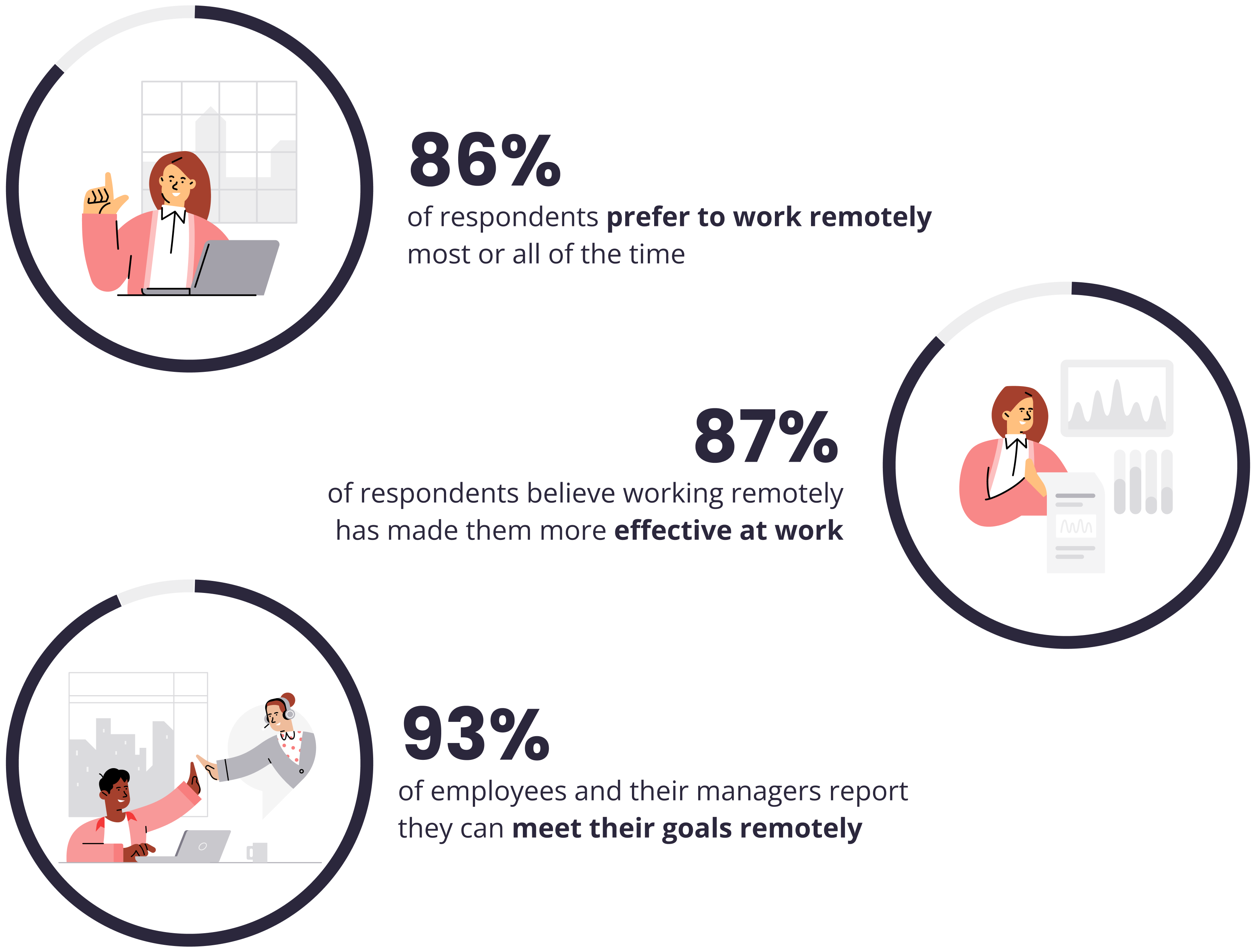
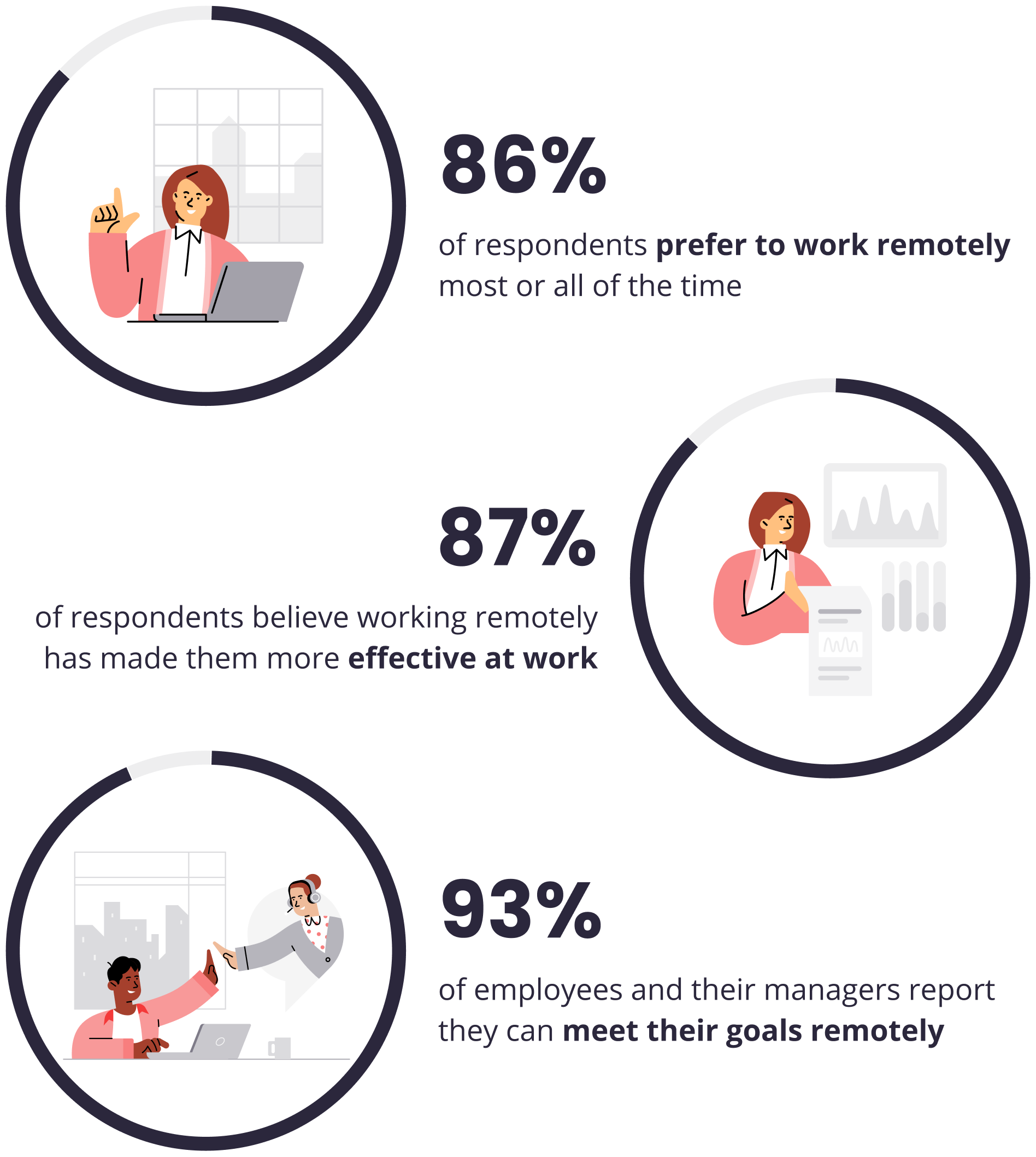
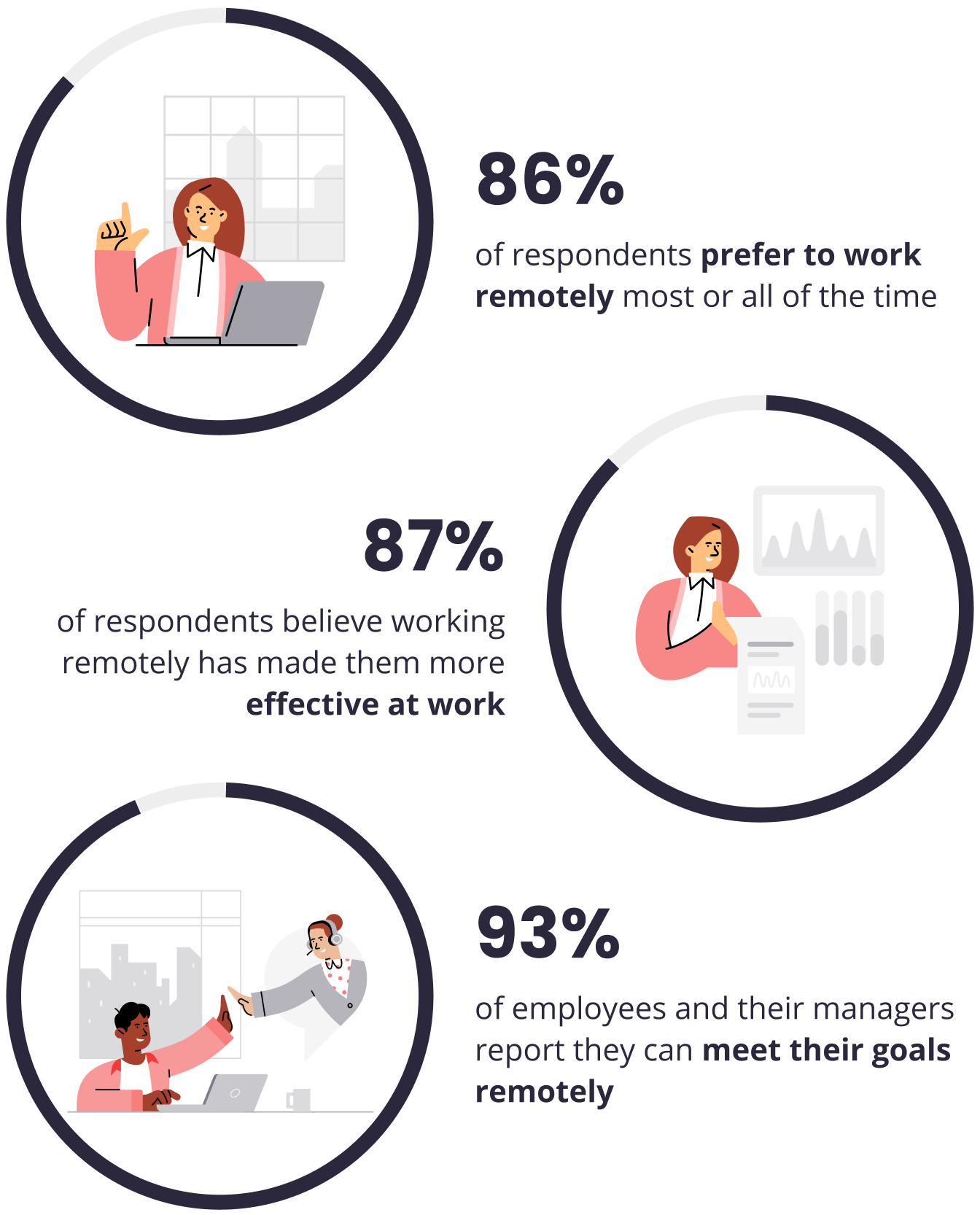
In a separate employee survey focused on benefits, nearly three in four respondents (74%) ranked “physical and mental wellbeing” as one of their two most important employee benefits in a remote setting. This led Yelp to increase its wellness stipend amount by 33% in 2023.
Consumers Picked Up New Hobbies Amid Remote Work Shift
As remote workers gain back the time they would have otherwise spent commuting to the office, Yelp user data shows consumer interest in a wide range of hobbies – from active sports to arts and leisure activities – has increased in 2022 when compared to both 2019 and 2021.
Consumer Interest in Popular Hobbies Remains Above Pre-Pandemic Levels
Increase in consumer interest for select categories on Yelp, 2022 vs. previous years
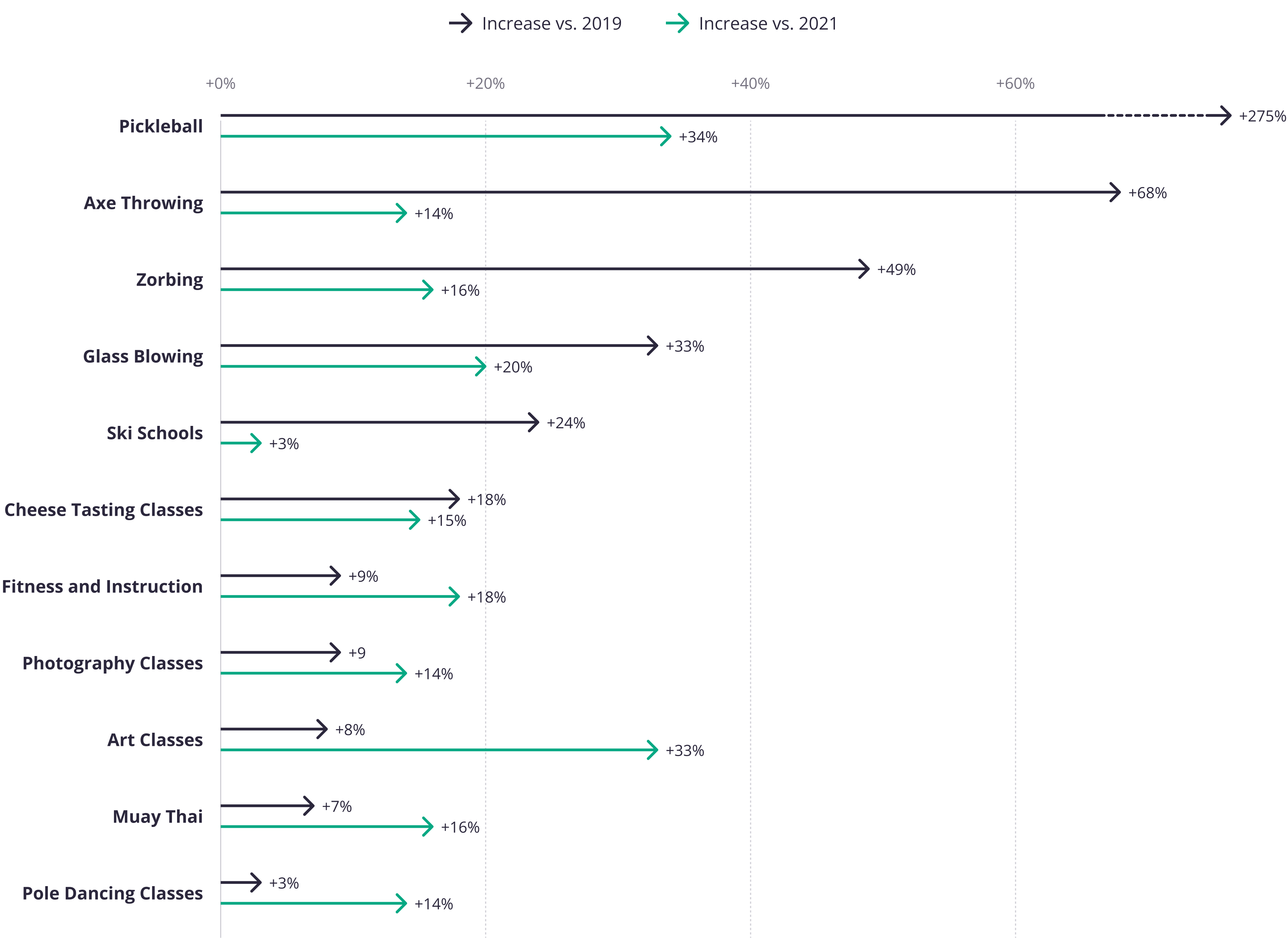
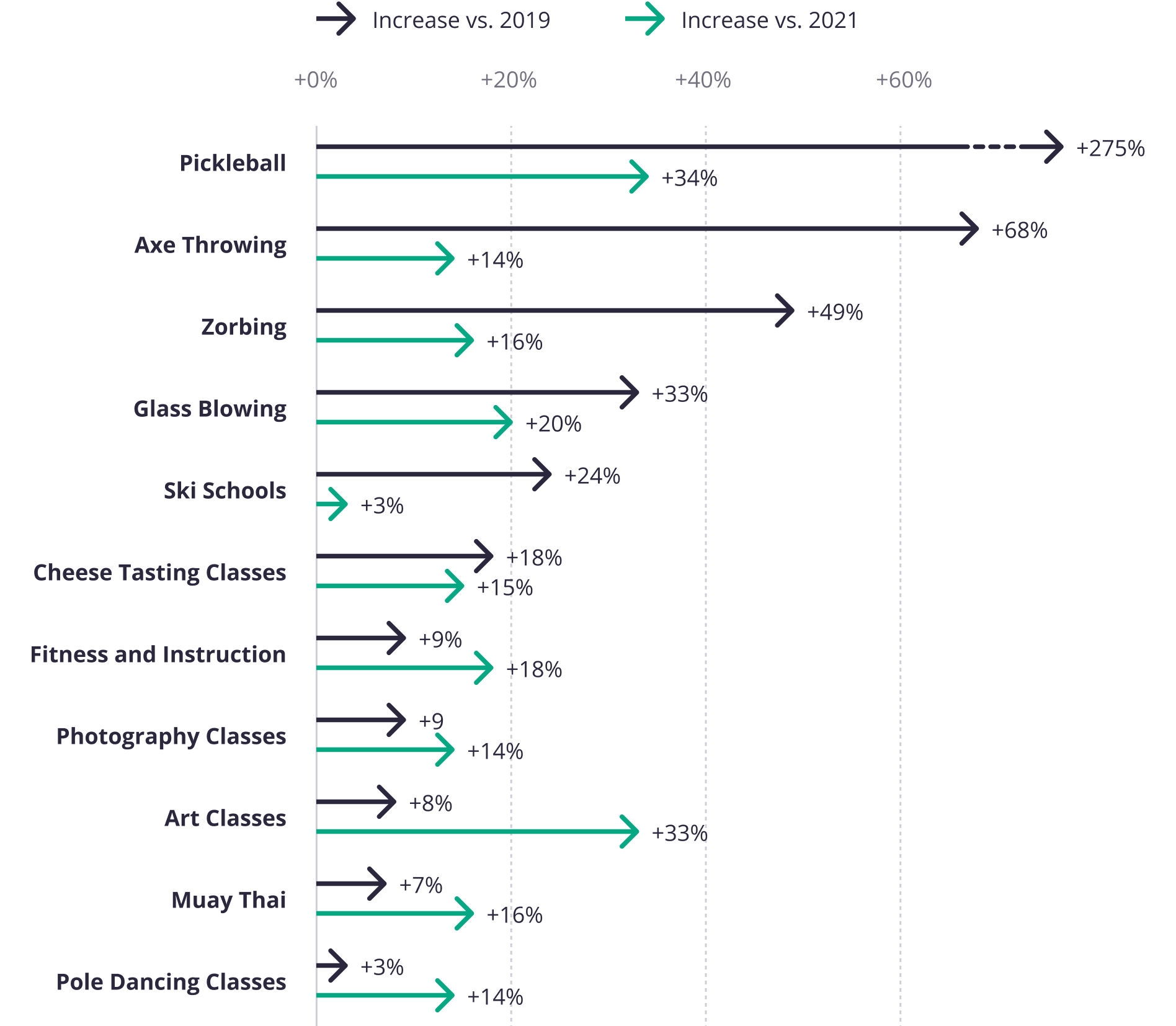
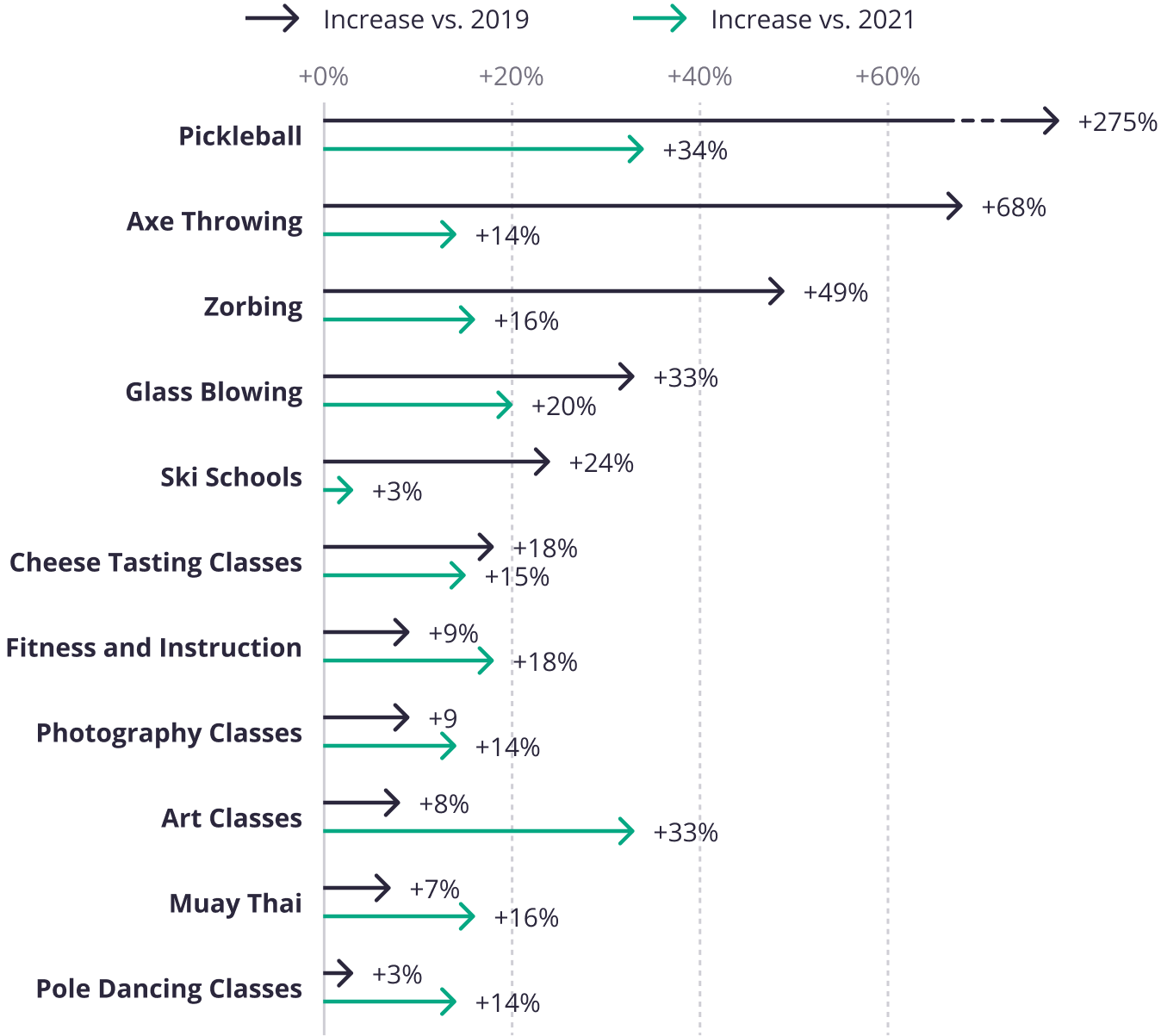
As flexible work arrangements become the norm for many U.S. industries, we anticipate people will continue to settle down in states and cities that provide more affordable cost of living and less population congestion – ultimately driving new opportunities for local businesses and entrepreneurs. Yelp will continue to assess how these shifts are reshaping local economies and impacting business growth across the U.S. At Yelp, the company plans to continue its intentional and deliberate approach to employee listening, taking action on feedback to continue meeting employee needs in a remote-first environment.
This report was revised to reflect updated employee location data on March 3, 2023.
If you'd like additional detail on how the economy is shifting, please contact us at press@yelp.com or join our mailing list to receive an email when new reports are released.
Interested in learning how Yelp data can assist you in developing market insights for your business? Yelp Knowledge can help, learn more here.
Methodology
Share of Search Locations
This metric analyzes how the distribution of U.S. search locations (where searches happened) shifted in 2022 compared to 2019 (pre-pandemic). For each location, the count of unique devices used to do searches on Yelp at that location is normalized by the total number of devices across all locations. Yelp then calculated the percentage change in the share of search locations in 2022 compared to the share of search locations in 2019 (pre-pandemic). Yelp made an assumption that the level of tourism remains the same across locations.
*U.S. cities: Yelp analyzed New York City by borough to gain a more granular understanding of how people were relocating within the larger city.
Business Openings
Business openings refer to new business pages on Yelp in a given timeframe. The business pages are added by either business representatives or Yelp users. Yelp calculated the percentage change in the count of new businesses listed on Yelp, comparing 2022 to 2019, for the same geographic locations, openings are adjusted year-over-year, meaning openings are measured relative to the same time period in the previous period for the same business categories and geographic locations. This adjustment aims to account for seasonality.
Consumer Interest
Yelp measures consumer interest of a category by aggregating the count of select actions that users take to connect with businesses on Yelp, such as viewing business pages, sharing photos or posting reviews. To observe the shift of user attention, which is likely to correlate with their expenditure, the consumer interest of a category is normalized by the total consumer actions on Yelp. By comparing a category’s period-over-period change in the share of consumer interest across categories, we draw inferences about the change in demand for different industries.
Yelp Employee Data
We analyzed various employee and candidate data from Jan. 1, 2019 through Dec. 31, 2022 to provide a high level overview of Yelp’s workforce distribution, engagement and sentiment in a remote environment. All global employees were included in the data sets, but contractors were not considered.
All employee location data is sourced from Workday and entered by respective employees, with data subject to inaccuracies due to manual entry of the data set.
Recruiting Data
For much of the recruiting/candidate data, 2020 was excluded due to the effects that the COVID-19 pandemic had on hiring. Time to hire is defined as the time between when a candidate submits an application and when they accept an offer.
Employee Sentiment Data
Several global Yelp employee experience surveys were also analyzed to provide employee and candidate sentiment data. This includes the company’s 2022 Distributed Work Survey, July 2022 Programs and Benefits Survey, and First 30 Days at Yelp survey. This data is also referred to as “employee listening data” throughout the report.
Downloadable static graphics can be found here.
See Yelp's previous Coronavirus Economic Impact Reports at our Data Science Medium, Locally Optimal.


